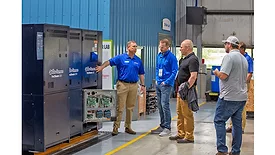Home » heat pumps
Articles Tagged with ''heat pumps''
New heat pump products pave the way for the shove to all things electric.
Read More
Sponsored Content
Adventures in Plumbing & Heating with Dave Yates | Volume 3
eBook
October 21, 2022
RENEWABLE HEATING DESIGN
John Siegenthaler: Heating, cooling and DHW from a single system
Three from one
June 1, 2022
PM Profile: Air-to-water heat pumps gaining national attention
PM Columnist John Siegenthaler guest-stars on PBS’ “Ask This Old House.”
April 20, 2022
Keep your content unclogged with our newsletters!
Stay in the know on the latest plumbing & piping industry trends.
JOIN TODAY!Copyright ©2025. All Rights Reserved BNP Media.
Design, CMS, Hosting & Web Development :: ePublishing













